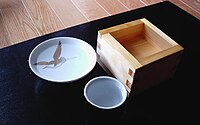
Medium to highly polar pesticides in seawater: Analysis and fate in coastal areas of Catalonia (NE Spain).
Sign Up to like & getrecommendations! Published in 2019 at "Chemosphere"
DOI: 10.1016/j.chemosphere.2018.10.049
Abstract: Pollution has been less investigated in marine and coastal environments than in inland waters. The low levels at which pollutants are expected to be present in seawater calls for the use of reliable and high… read more here.
Keywords: catalonia spain; analysis; polar pesticides; highly polar ... See more keywords

Chaotropic Effects in Supercritical Fluid Chromatography via Ammonium Hydroxide in Water-rich Modifiers: Enabling Separation of Peptides and Highly Polar Pharmaceuticals at Preparative Scale.
Sign Up to like & getrecommendations! Published in 2019 at "Analytical chemistry"
DOI: 10.1021/acs.analchem.9b03408
Abstract: Chromatographic separation, analysis and characterization of complex highly polar analyte mixtures can often be very challenging using conventional separation approaches. Analysis and purification of hydrophilic compounds have been dominated by liquid chromatography (LC) and ion-exchange… read more here.
Keywords: chromatography; water; ammonium hydroxide; separation ... See more keywords

Interstellar detection of the highly polar five-membered ring cyanocyclopentadiene
Sign Up to like & getrecommendations! Published in 2020 at "Nature Astronomy"
DOI: 10.1038/s41550-020-01213-y
Abstract: Much like six-membered rings, five-membered rings are ubiquitous in organic chemistry, frequently serving as the building blocks for larger molecules, including many of biochemical importance. From a combination of laboratory rotational spectroscopy and a sensitive… read more here.
Keywords: cyanocyclopentadiene; highly polar; five membered; chemistry ... See more keywords

Sake (Rice Wine) Brewing Hydrolyzes Highly Polar Sphingolipids to Ceramides and Increases Free Sphingoid Bases.
Sign Up to like & getrecommendations! Published in 2021 at "Journal of oleo science"
DOI: 10.5650/jos.ess21125
Abstract: In plants and fungi, sphingolipids, characterized by the presence of a sphingoid base (SB), comprise neutral classes, including ceramide (Cer) and glucosylceramide (GlcCer), and acidic classes, including glycosyl inositol phosphoryl ceramide (GIPC). The major class… read more here.
Keywords: polar sphingolipids; rice wine; rice; highly polar ... See more keywords